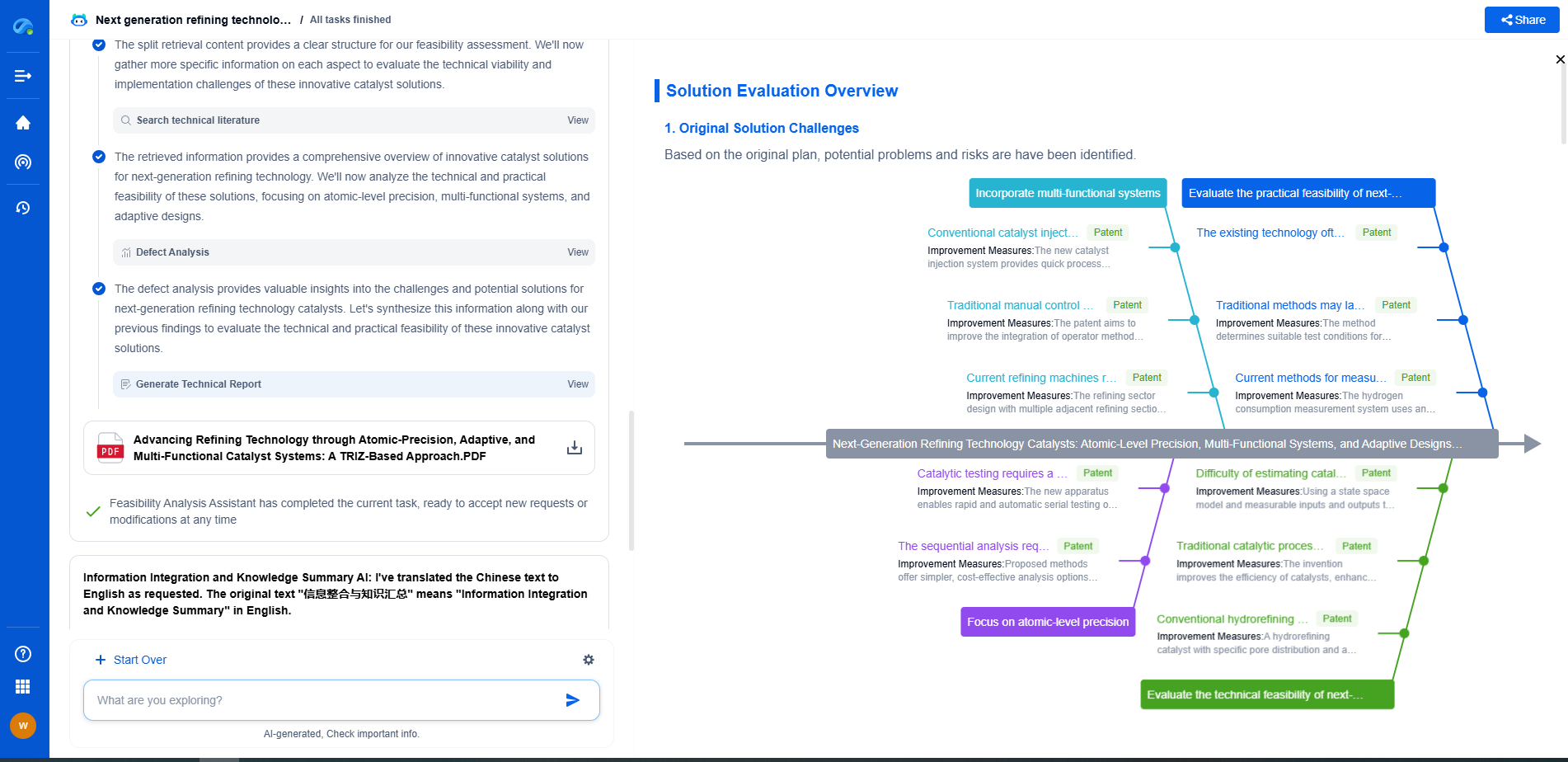Articulated vs Delta robots: A performance parameter comparison
JUN 26, 2025 |
In the world of robotics, choosing the right robot for a particular application can be a daunting task. Among the most commonly used robots in industrial settings are articulated and delta robots. Both types have distinct characteristics that make them suitable for different tasks. This blog will provide a comprehensive comparison of articulated and delta robots, focusing on performance parameters that influence their suitability for certain applications.
Understanding Articulated Robots
Articulated robots are characterized by their rotary joints, which often resemble the movement of a human arm. This design provides them with a high degree of flexibility and reach, making them ideal for tasks that require complex movements. Articulated robots typically have six degrees of freedom, though some models may offer more or less, providing a wide range of motion.
Advantages of Articulated Robots
One of the primary advantages of articulated robots is their versatility. Their structure allows them to perform a variety of tasks, from welding and assembly to material handling and machine tending. Their ability to move in multiple planes makes them suitable for applications requiring intricate maneuvering.
Another significant advantage is their payload capacity. Articulated robots can handle heavy objects, making them ideal for industries such as automotive manufacturing where lifting and manipulating large parts is necessary.
However, the complexity in their movement can sometimes lead to longer cycle times compared to other robot types, especially for tasks that do not require their full range of motion.
Understanding Delta Robots
Delta robots, on the other hand, are known for their speed and precision. These robots have a unique parallel-design structure, often resembling a spider with three arms connected to universal joints at the base. Delta robots are designed primarily for high-speed applications and excel in tasks that require quick and precise movements, such as packaging, sorting, and assembly of small components.
Advantages of Delta Robots
The standout feature of delta robots is their speed. Their lightweight arms and simple construction allow them to achieve much faster cycle times compared to articulated robots. This makes delta robots particularly advantageous in industries such as food and beverage, pharmaceuticals, and electronics, where quick processing is essential.
Delta robots also have excellent precision, owing to their design and control systems. This makes them highly suitable for tasks that require exact placement and manipulation of small or delicate parts.
However, delta robots typically have a smaller work envelope and lower payload capacity, limiting their application to tasks involving smaller items.
Comparative Performance Parameters
1. **Speed and Cycle Time**: Delta robots have the upper hand in terms of speed, often completing tasks in a fraction of the time taken by articulated robots. This is a critical factor in industries where throughput is a priority.
2. **Payload Capacity**: Articulated robots generally offer higher payload capacities, making them more suitable for handling heavier items. This is a significant consideration in sectors like automotive and heavy manufacturing.
3. **Precision and Accuracy**: Delta robots excel in precision, making them ideal for tasks that require exact positioning. Articulated robots, while precise, are often used for less delicate tasks where flexibility is more crucial than pinpoint accuracy.
4. **Flexibility and Range of Motion**: Articulated robots provide superior flexibility and range of motion, allowing them to perform a wider variety of tasks that involve complex paths and angles. Delta robots, however, are limited to tasks that align with their structural design.
5. **Footprint and Space Requirements**: Delta robots typically have a smaller footprint, making them suitable for environments where space is at a premium. Articulated robots require more room to operate efficiently, which may be a constraint in smaller facilities.
Conclusion
The choice between articulated and delta robots should be guided by the specific requirements of the application. Articulated robots offer versatility and high payload capacities, making them ideal for tasks requiring complex movements and handling of heavy items. In contrast, delta robots provide unmatched speed and precision for high-throughput operations involving lighter loads. By carefully considering these performance parameters, businesses can optimize their automation processes, enhancing efficiency and productivity.
Ready to Redefine Your Robotics R&D Workflow?
Whether you're designing next-generation robotic arms, optimizing manipulator kinematics, or mining patent data for innovation insights, Patsnap Eureka, our cutting-edge AI assistant, is built for R&D and IP professionals in high-tech industries, is built to accelerate every step of your journey.
No more getting buried in thousands of documents or wasting time on repetitive technical analysis. Our AI Agent helps R&D and IP teams in high-tech enterprises save hundreds of hours, reduce risk of oversight, and move from concept to prototype faster than ever before.
👉 Experience how AI can revolutionize your robotics innovation cycle. Explore Patsnap Eureka today and see the difference.
- R&D
- Intellectual Property
- Life Sciences
- Materials
- Tech Scout
- Unparalleled Data Quality
- Higher Quality Content
- 60% Fewer Hallucinations
Browse by: Latest US Patents, China's latest patents, Technical Efficacy Thesaurus, Application Domain, Technology Topic, Popular Technical Reports.
© 2025 PatSnap. All rights reserved.Legal|Privacy policy|Modern Slavery Act Transparency Statement|Sitemap|About US| Contact US: help@patsnap.com

